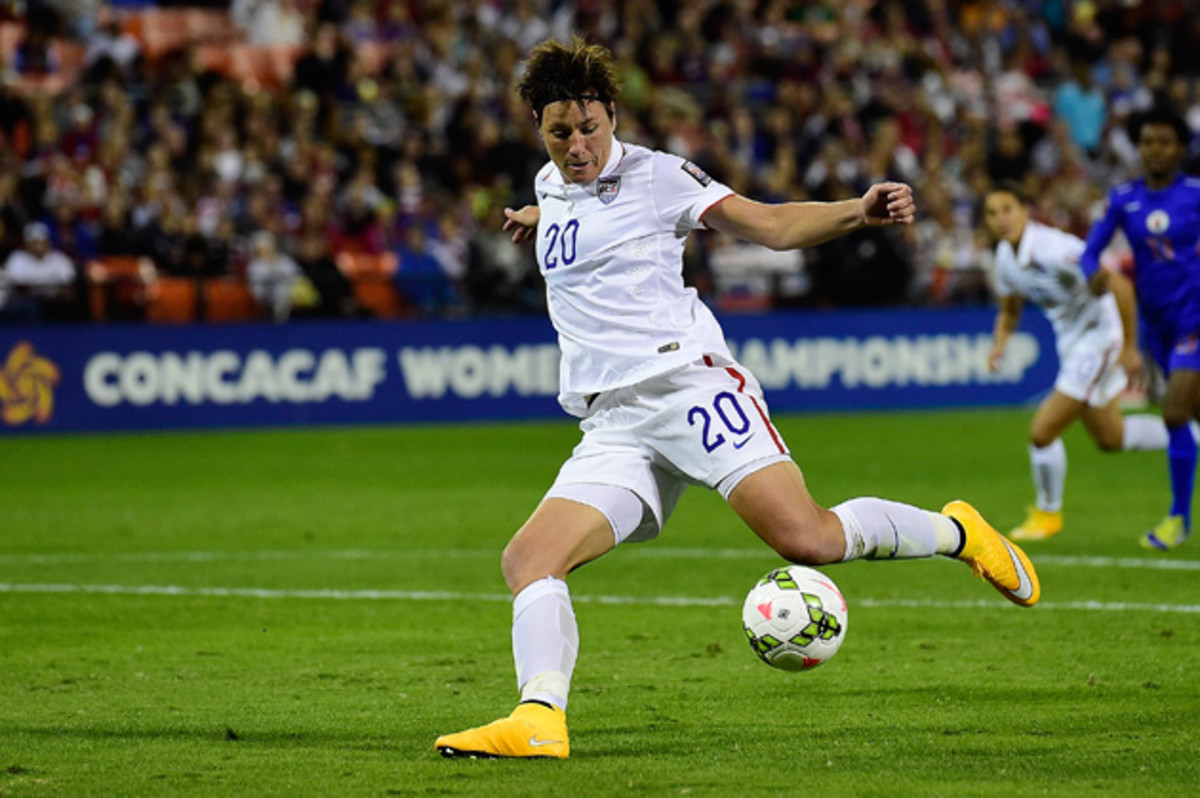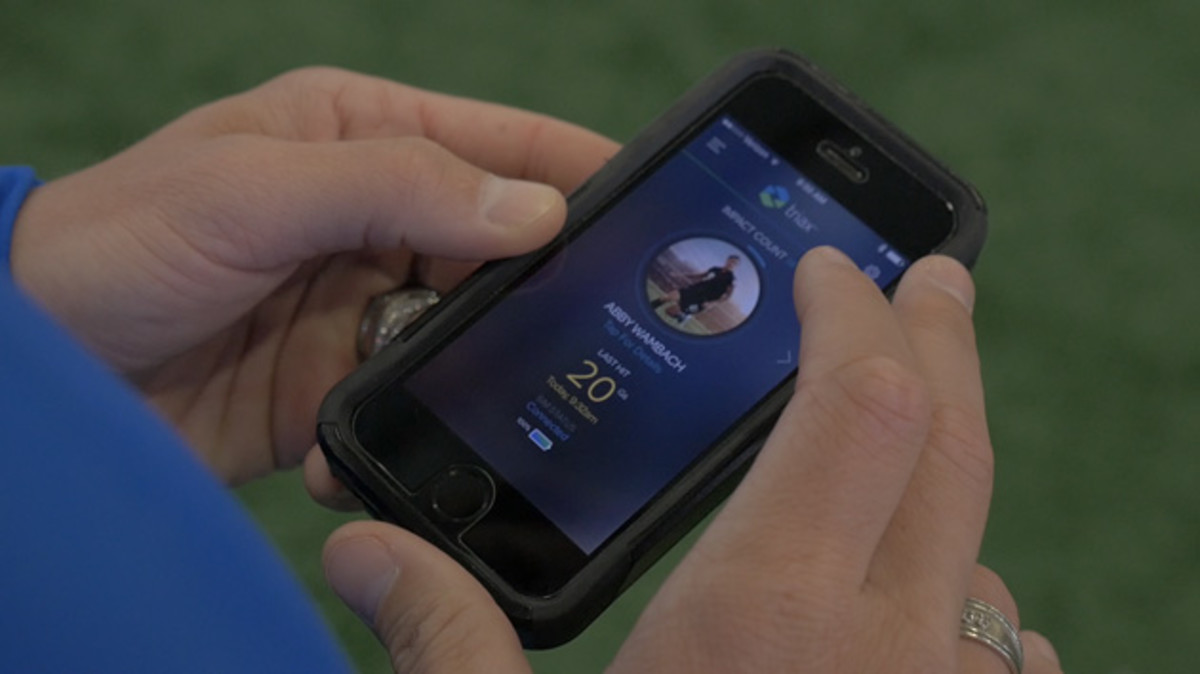Abby Wambach tracks head impacts to spread concussion awareness

A 10-yarder in the 112th minute off a corner kick from Kristine Lilly for a 2-1 victory and a gold medal in the 2004 Olympics. An equalizer in the 122nd minute from Megan Rapinoe to help the U.S. advance to the 2011 World Cup final. A record 159th career international goal off a corner kick to pass Mia Hamm on the all-time list.
Abby Wambach’s standout headers have become her trademark over a 12-year professional career, but those same goals hitting the back of the net could also be making an impact on her health.
“A year and a half ago I suffered my first concussion. It really worried me,” says the 34-year-old striker. “As a professional athlete, we’re all so schooled to tough it out, but the reality is that we have the technology out there that can give you information to make better decisions for yourself—so why not use it?”
Players' anti-turf lawsuit for Women's World Cup not a clear-cut win
). The Bluetooth device—which has a back-of-the-head sensor in both a headband and skullcap variation—assesses blows to the head by measuring G-force. As impacts occur, the device automatically uploads the hit count and severity numbers to a mobile app, through which users, parents and coaches can access data. Forceful impacts are flagged to help players receive proper assessment and treatment following a hit.
“Our strength and conditioning coach does exercises with us to make sure we are completely fit and ready to take the general impacts that happen in the game,” says Wambach, who wears the headband model during all of her training sessions. “But you can’t prepare for everything, and the Smart Impact Monitor gives real-time information. The more information we can have on the field, the better.”

says the device is a key prevention tool for athletes.
“Athletes have always been about self monitoring—counting reps, counting sprints, counting everything. Monitoring brain trauma is no different,” says the former WWE wrestler. “There’s a tremendous gap between concussion recognition and diagnosis and this is a better way for humans on the sideline to monitor hard hits and concussions.”
Wambach says she trains her neck muscles to make them stronger, and while that helps, SLI co-founder and neurological surgeon Robert Cantu warns that prevention through strength training can only go so far.

. “Multiple studies show that individuals that start tracking trauma earlier in life have less brain atrophy over the course of their career.”
Cantu and Nowinski agree that the SIM-P technology and its user-friendly app make the device more accessible to younger athletes across several different sports in which head impacts can occur, including soccer, football, lacrosse and even cheerleading. Just as other devices can keep track of speed, distance and power, the SIM-P technology now quantifies the amount of force an impact has on an individual—something athletes and coaches were not able to track before this.
Designing the ultimate pro athlete recovery center — in the air
After using the SIM-P headband in training, Wambach says her numbers have been in a safe range. She says she is aware that many young players who are familiar with current concussion protocol will try to stay in the game after a blow to the head, but hopes the SIM-P device will “give trainers and coaches the right information they need, so we don’t endanger players by leaving them on the field or putting them back in too early.”
Going forward, she says she wants to see the NFL, colleges and other larger companies get on board with Triax’s SIM-P system. But until FIFA allows the technology to be used in games, Wambach will continue to wear the headband in practice to count and score each of her head impacts—and she’ll probably keep scoring on her signature headers too. Her goal is to help spread awareness and ultimately minimize the number of concussions in the game.
“The most important thing is to get better at your craft, and concussions and head impacts are a setback,” she says. “I want to do what I can to give the next generation of athletes added advantages in the game.”
